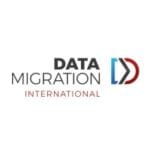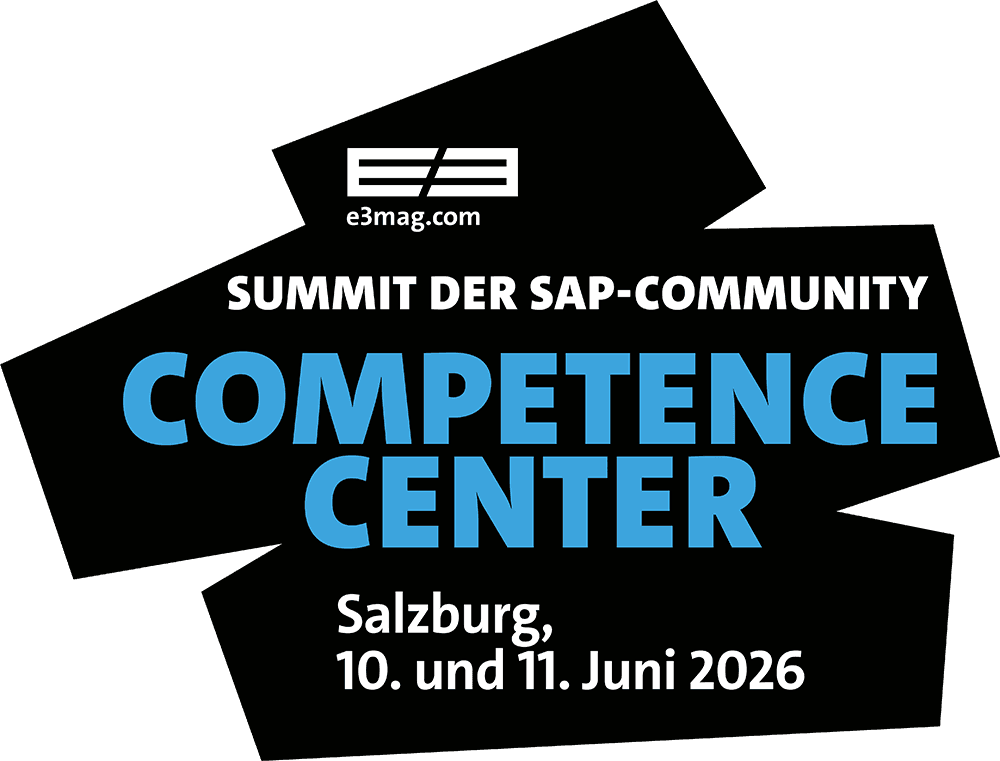What Is the Status of the S/4 Transformation?


E3: Mr. Failer, the transformation of legacy data to SAP S/4 Hana is part of your core business. How would you describe the current status of such projects in the market?
Thomas Failer, DMI: I estimate that there are about 35,000 ECC systems on the market that are eligible for conversion. About 5,000 of these systems have already been converted. Certainly, 20 percent or more of the other 30,000 systems are in various stages of the project. Overall, these transformation projects fall into three broad groups.
E3: What would they be?
Failer:The first group includes customers who have already successfully implemented and are running SAP S/4 Hana. This includes the 5,000 systems I mentioned earlier. However, we estimate that about 2,000 ECC 6.0 systems in this group are still in operation due to legal data retention requirements, but also for business reasons. Of course, there is a good deal of effort and cost that could be saved by retiring these systems.
E3: Regarding your traditional business, what does the second group look like?
Failer:I assume that there are now a large number of SAP customers who have been convinced by the arguments in favor of the SAP cloud. They want to benefit from the relief of having SAP take care of system and infrastructure maintenance. They also want to rely on the SAP standard, i.e. follow SAP's clean core strategy. However, they would prefer to make this transition to the cloud in two steps. The first step would be to move their ECC 6.0 system to the SAP cloud. The transformation to SAP S/4 Hana would come later. SAP has understood this and has recently introduced the SAP ERP, Private Edition, Transition Option, which can secure complex transformations. We also welcome this, but advise SAP customers to remove unnecessary data ballast from their existing SAP system before moving to the SAP cloud.
E3: You're right. How would you describe the third group?
Failer:This is probably the largest of them all. The companies in this group are already in the process of migrating to S/4 Hana. Perhaps half of them are actively working on migration or system consolidation, while the others are going through the various phases of preparation and pre-projects for SAP ECC 6.0. These preliminary projects include the introduction of the new General Ledger or the Partner business object, which replaces previous objects such as Customer or Supplier, and the conversion to the SAP Hana database.
E3: Aren't preliminary projects a sensible intermediate step?
Failer:Not from our point of view. SAP customers take a detour with pre-projects instead of taking the direct route. The central questions of a transformation project remain unanswered.
E3: What are those central questions?
Failer:How much master and transaction data is needed in SAP S/4 Hana? Is it really necessary to carry the entire history? This ballast makes it difficult to return to the standard, drags out projects and prevents the introduction of new and better processes. This is especially true for existing SAP customers who want to take advantage of Clean Core and the Business Technology Platform.
E3: You'll have to explain that.
Failer:Plants, components, customers, or suppliers that no longer exist bring with them data structures from the legacy systems that do not or only partially match the new and cleansed processes and settings in SAP S/4 Hana. It certainly makes sense to implement some individual adjustments and enhancements for company-specific processes. However, in our experience, an SAP customer only needs on average five to a maximum of ten percent of the existing transaction data, about 20 percent of the master data, and only half of the previous customizing settings such as organizational units or document types, etc. in the new S/4 Hana. This reduction was not possible with the previous projects. As a result, the time, resources, and costs are wasted. Not to mention the fact that these preliminary projects, like the first group, do not include the decommissioning of legacy systems.

Thomas Failer,Founder and Group CEO, Data Migration International
E3: How can you help these customers?
Failer:With our empty shell and reduction approach, transformation and migration via the application layer, and standard migration tools such as the SAP Migration Cockpit, we can turn virtually any project into a greenfield or conversion project. This eliminates the need for pre-projects and enables legally compliant decommissioning of legacy systems. We optimize data quality, which is one of the key prerequisites for the effective use of AI in the enterprise. After all, bad data combined with artificial intelligence can do more harm than good. We also ensure that the SAP S/4 Hana system remains lean and cost-effective. Because memory is still expensive. In figures, this means 80 percent lower costs compared to continued operation of legacy systems, half the transformation effort, and an estimated 25 percent lower total cost of ownership when using SAP S/4 Hana. All with 100 percent legal certainty. We can deliver all these benefits to all three groups.
E3: Please explain your approach in more detail.
Failer:The basis is the separation of the data level from the application level. Both have their own life cycles. Data lives longer than the applications in which it was created. To enable this separation, we have created a platform on which we can manage the lifecycle of legacy data until its legally compliant deletion, sometimes after decades. We transfer all legacy data to this platform. There, our customers can identify and decide which data they want to transfer to SAP S/4 Hana and reduce it to the absolute minimum. An example of such data is open orders. Experience shows that only five to ten percent of the transaction data from the legacy systems needs to be transferred to SAP S/4 Hana, while all the legacy data remains on our platform.
E3: And the master data?
Failer:The same applies to master data. On average, our customers still have about 20 percent to migrate to the current software generation. In addition to the reduction, the issue of quality assurance is almost more important. Over the years, even decades, countless redundant, incomplete, and erroneous master data sets accumulate. The transfer of this data, even if it has been reduced, only makes sense if it is complete, cleansed and correct, ideally even enriched with data from other sources. Migrating to S/4 Hana via our platform offers existing SAP customers a unique opportunity to start with high-quality data and unlock the potential of data analytics and AI.
E3: But you could also achieve this with other tools…
Failer:But not as quickly, easily, and risk-free. You also need a toolbox from multiple vendors. This means more complexity and therefore more effort and potential sources of error, especially if the transformation takes place at the table level. We have a platform that provides SAP customers with a single source for everything from high-speed data extraction from legacy systems, data reduction, retention management, and data quality optimization to transformation and migration across the application layer. Instead of tools, they get fully integrated capabilities on a single platform.
E3: If I understand you correctly, data is one thing, business objects are something else, aren't they?
Failer:Yes, but the two are closely related. This is because a business object is defined by the data associated with it. This close relationship has dramatic consequences. A good example is the business object Partner in SAP S/4, which replaces the ECC 6.0 objects Customer, Vendor, and Partner. The easiest way to identify the necessary master and transaction data in the legacy systems and to migrate it reliably and without errors is to determine, transform and migrate it outside the legacy systems, i.e. on our platform. This is also a prerequisite for migration via the application layer, similar to a conversion. At least as important, however, is that our approach facilitates and accelerates the implementation of SAP S/4 Hana.
E3: And how does the data get into the new system?
Failer:On our platform, we ensure that all the data required by the business objects in the new S/4 system is made available, identified, cleansed, enriched, and transformed so that it exactly matches the business objects. We then migrate this data to SAP S/4 Hana via the application layer and the SAP Migration Cockpit. This is the fastest and least risky way.
E3: How can you help the groups of SAP customers you mentioned?
Failer:First of all, we can help all these groups with our approach. We give them independence. We help the former with legally compliant decommissioning, typically saving them 80 percent or more in costs compared to continuing to operate the legacy systems. This also massively reduces the security risk, as legacy systems eventually become unmaintainable and security patches are no longer available for them.
E3: How will this benefit the second group, which wants to keep its ECC system?
Failer:The decommissioning of failing systems is just one of the functions of our platform for enterprise-wide information management, JiVS IMP. For the second group, we offer additional benefits. Before these existing SAP customers migrate their ECC 6.0 system to the SAP Cloud, we can transfer the entire data inventory to our platform to clean it up and, most importantly, reduce the amount of data to the necessary minimum. If customers need to access legacy data, they can do so directly from their SAP GUI or via Fiori. Alternatively, they can use our platform interface to access the legacy data. In addition, companies are perfectly prepared at the data level for the later, faster and easier S/4 migration. This also gives them more freedom of choice and independence.
E3: What about the third group?
Failer:Those who have already implemented SAP S/4 Hana can decommission their legacy systems with our platform. Their new system will also remain lean. We can also subsequently optimize the legacy data so that SAP customers can also benefit from AI. And for all the others who are still in the preparation phase, we can save them the preliminary projects and enable them to transform and migrate in one step with much less effort, including financial. At the same time, they get 100 percent legal compliance, retention management, and IT security. This means lower costs, less risk, more speed, and most importantly, more independence from legacy issues.
E3: Mr. Failer, thank you very much for the interview.



